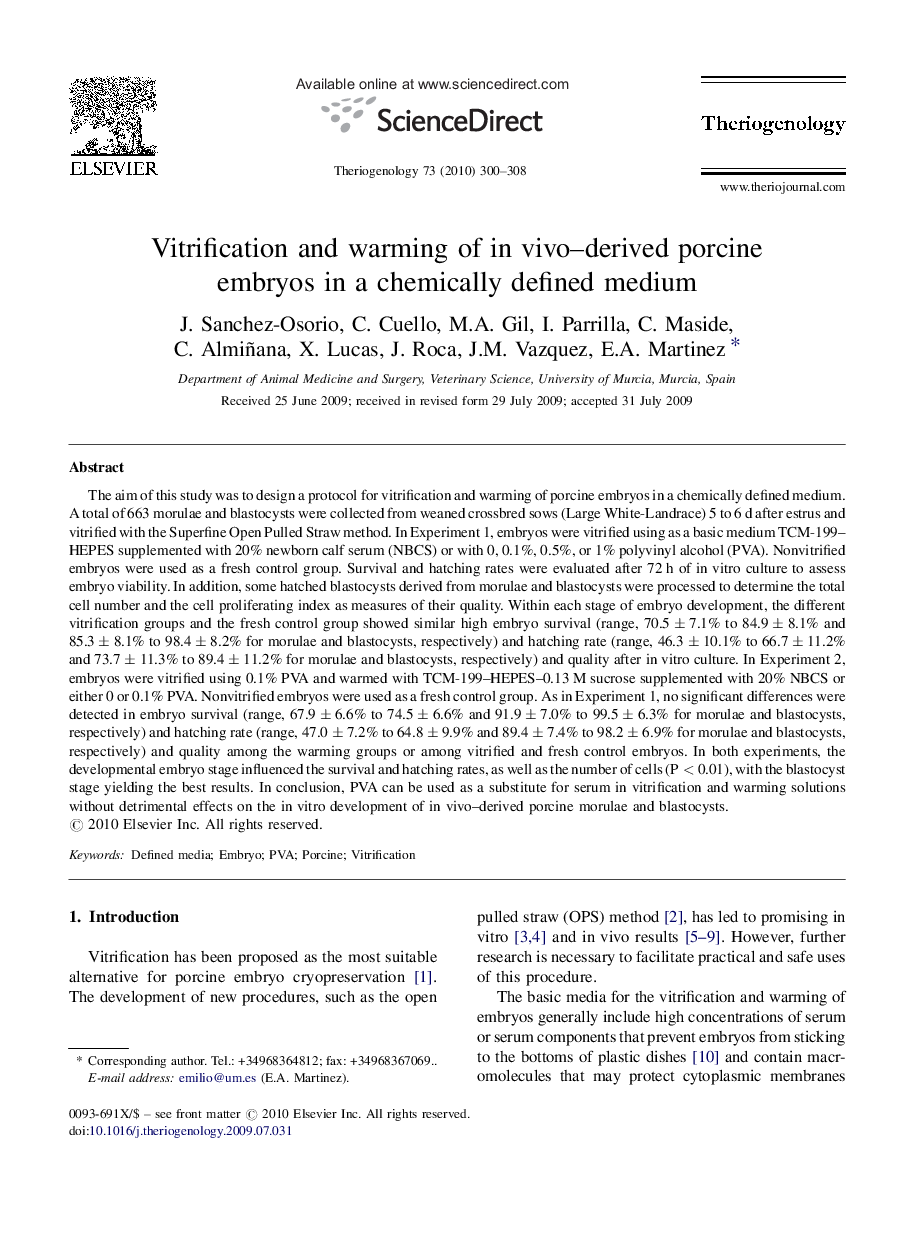| کد مقاله | کد نشریه | سال انتشار | مقاله انگلیسی | نسخه تمام متن |
|---|---|---|---|---|
| 2097958 | 1082575 | 2010 | 9 صفحه PDF | دانلود رایگان |

The aim of this study was to design a protocol for vitrification and warming of porcine embryos in a chemically defined medium. A total of 663 morulae and blastocysts were collected from weaned crossbred sows (Large White-Landrace) 5 to 6 d after estrus and vitrified with the Superfine Open Pulled Straw method. In Experiment 1, embryos were vitrified using as a basic medium TCM-199–HEPES supplemented with 20% newborn calf serum (NBCS) or with 0, 0.1%, 0.5%, or 1% polyvinyl alcohol (PVA). Nonvitrified embryos were used as a fresh control group. Survival and hatching rates were evaluated after 72 h of in vitro culture to assess embryo viability. In addition, some hatched blastocysts derived from morulae and blastocysts were processed to determine the total cell number and the cell proliferating index as measures of their quality. Within each stage of embryo development, the different vitrification groups and the fresh control group showed similar high embryo survival (range, 70.5 ± 7.1% to 84.9 ± 8.1% and 85.3 ± 8.1% to 98.4 ± 8.2% for morulae and blastocysts, respectively) and hatching rate (range, 46.3 ± 10.1% to 66.7 ± 11.2% and 73.7 ± 11.3% to 89.4 ± 11.2% for morulae and blastocysts, respectively) and quality after in vitro culture. In Experiment 2, embryos were vitrified using 0.1% PVA and warmed with TCM-199–HEPES–0.13 M sucrose supplemented with 20% NBCS or either 0 or 0.1% PVA. Nonvitrified embryos were used as a fresh control group. As in Experiment 1, no significant differences were detected in embryo survival (range, 67.9 ± 6.6% to 74.5 ± 6.6% and 91.9 ± 7.0% to 99.5 ± 6.3% for morulae and blastocysts, respectively) and hatching rate (range, 47.0 ± 7.2% to 64.8 ± 9.9% and 89.4 ± 7.4% to 98.2 ± 6.9% for morulae and blastocysts, respectively) and quality among the warming groups or among vitrified and fresh control embryos. In both experiments, the developmental embryo stage influenced the survival and hatching rates, as well as the number of cells (P < 0.01), with the blastocyst stage yielding the best results. In conclusion, PVA can be used as a substitute for serum in vitrification and warming solutions without detrimental effects on the in vitro development of in vivo–derived porcine morulae and blastocysts.
Journal: Theriogenology - Volume 73, Issue 3, February 2010, Pages 300–308